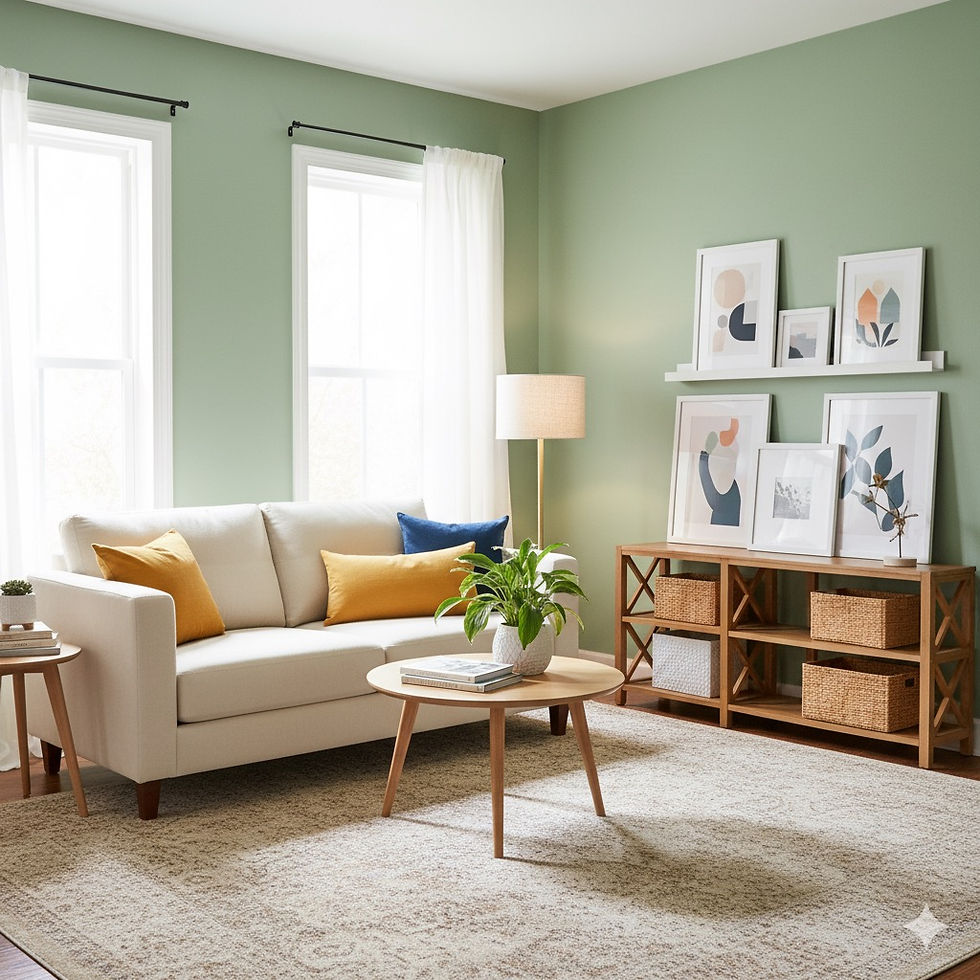Transform Your Home with Sustainable Interior Design
- Roselya LLC
- 7 days ago
- 3 min read
Creating a beautiful home that reflects your style and values is a rewarding journey. Today, more people are choosing eco-friendly design practices to make their living spaces healthier and more sustainable. I want to share practical tips and ideas to help you transform your home with these thoughtful approaches. Whether you are updating a single room or redesigning your entire space, these strategies will guide you toward a modern, elegant, and environmentally conscious home.
Embracing Eco-Friendly Design Practices in Your Home
Eco-friendly design practices focus on reducing environmental impact while enhancing comfort and style. These methods prioritize natural materials, energy efficiency, and waste reduction. Here are some simple ways to start:
Choose natural and renewable materials: Opt for wood, bamboo, cork, or recycled metals instead of plastics or synthetic materials. These options are durable and have a smaller carbon footprint.
Use low-VOC paints and finishes: Volatile organic compounds (VOCs) can harm indoor air quality. Selecting low-VOC or zero-VOC products keeps your home healthier.
Maximize natural light: Arrange furniture and window treatments to let in as much daylight as possible. This reduces the need for artificial lighting and saves energy.
Incorporate energy-efficient lighting: Replace incandescent bulbs with LED or CFL bulbs. They use less electricity and last longer.
Select sustainable textiles: Look for organic cotton, linen, hemp, or recycled fabrics for upholstery, curtains, and rugs.
By integrating these eco-friendly design practices, you create a space that feels fresh and inviting while supporting the planet.

How to Choose Sustainable Furniture and Decor
Furniture and decor play a big role in your home's style and sustainability. When shopping, consider these factors:
Material source: Choose pieces made from reclaimed wood or sustainably harvested timber. Avoid items with particleboard or MDF that contain formaldehyde.
Durability: Invest in quality furniture that lasts for years. Durable pieces reduce waste and the need for frequent replacements.
Local craftsmanship: Supporting local artisans reduces transportation emissions and helps your community.
Secondhand and vintage finds: Thrift stores, estate sales, and online marketplaces offer unique, affordable options that keep items out of landfills.
Minimal packaging: Select products with minimal or recyclable packaging to reduce waste.
For decor, focus on natural elements like plants, stone, or handmade ceramics. These add texture and warmth without synthetic chemicals.

What is the 3-5-7 Rule in Interior Design?
The 3-5-7 rule is a simple guideline to create balanced and visually appealing interiors. It refers to the number of colors, patterns, or textures you use in a space:
3: Choose three main colors to form the base palette. This keeps the room cohesive and not overwhelming.
5: Add five different textures or materials to create depth and interest. For example, combine wood, metal, fabric, glass, and stone.
7: Incorporate seven accent pieces or decorative items to personalize the space without cluttering it.
Applying this rule helps you mix eco-friendly materials and colors harmoniously. For instance, you might select three earth tones, five natural textures like linen and bamboo, and seven plants or handmade objects to complete the look.
Practical Tips for Energy Efficiency and Waste Reduction
Energy efficiency and waste reduction are key components of sustainable interior design. Here are actionable steps you can take:
Install programmable thermostats: These devices optimize heating and cooling, saving energy and money.
Seal windows and doors: Proper insulation prevents drafts and keeps your home comfortable year-round.
Use water-saving fixtures: Low-flow faucets and showerheads reduce water consumption without sacrificing performance.
Recycle and donate: When remodeling, recycle materials like metal, glass, and wood. Donate usable furniture and decor to local charities.
Compost organic waste: If you have a garden, composting food scraps reduces landfill waste and enriches soil.
These small changes add up to significant environmental benefits and lower utility bills.
Bringing It All Together with Sustainable Interior Design
Transforming your home with eco-friendly design practices is easier than you might think. By choosing natural materials, energy-efficient solutions, and thoughtful decor, you create a space that is both beautiful and responsible. I encourage you to explore sustainable interior design options that fit your style and budget.
Working with a trusted partner can make the process smooth and enjoyable. They can help you select the right products, plan layouts, and ensure quality craftsmanship. Your home will not only look modern and elegant but also reflect your commitment to a healthier planet.
Start small or go big - every step toward sustainability counts. Your home can be a sanctuary that nurtures you and the environment alike.

By adopting these eco-friendly design practices, you create a home that feels good to live in and good to the earth. Let your space tell a story of care, creativity, and conscious choices.




Comments